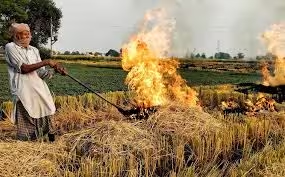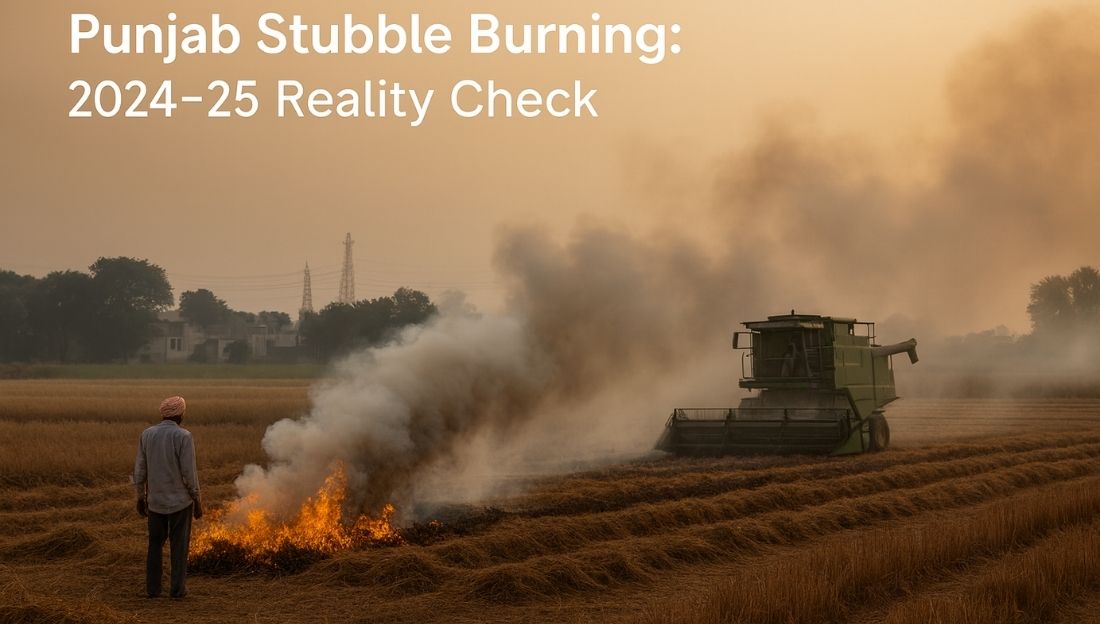With the onset of the paddy harvest season in Punjab, cases of stubble burning have once again drawn attention.
Background
- Punjab, a key rice-producing State, witnesses widespread stubble burning after paddy harvest every year.
- Farmers burn leftover stalks to quickly prepare fields for wheat sowing, as they have only a three-week gap between the two crops.
- The practice is a major contributor to North India’s winter air pollution, especially affecting Delhi and surrounding regions.

Decline in Reported Fire Incidents
- According to official data, Punjab recorded 10,909 stubble fires in 2024, compared to 36,663 in 2023, showing a 70% drop.
- Authorities attribute this to government measures, stricter enforcement, and subsidised machinery for residue management.
Increase in Burnt Area
- Despite fewer reported fires, the total area affected by burning remained almost the same — 19.17 lakh hectares in 2024 versus 19.14 lakh hectares in 2023.
- In 2022 and 2021, burnt areas were 15.4 lakh ha and 15.6 lakh ha, respectively, indicating a gradual increase in total burnt land.
Reasons for the Data Discrepancy
- Satellite Limitations: Fire incidents are detected using thermal sensors on satellites like MODIS and VIIRS, which pass over Punjab only a few times daily. Since most fires occur in the late afternoon or evening, many go undetected.
- Small and Fragmented Fires: Punjab’s small landholdings mean fires are short, localised, and low-intensity, making them harder to detect than large-scale forest fires.
- Human Evasion: Some farmers, aware of satellite monitoring, disguise or cover burnt fields before satellite overpass times.
- Improved Remote Sensing Tools: Experts suggest using optical sensors like Sentinel-2, which detect burn scars and discolouration post-fire, offering a more accurate picture.
Way Forward
- Integrated Monitoring Approach: Combine thermal and optical satellite data with ground verification surveys for accurate results.
- Emission-Based Assessment: Evaluate stubble burning impact based on fire intensity, fuel load, and duration, not just burnt area.
- Farmer Support Measures: Expand access to machinery for residue management and incentivise crop diversification.
- Awareness and Enforcement: Continue public awareness campaigns and ensure local-level accountability through village monitoring committees.
Conclusion
While Punjab reports fewer fire incidents, the scale of burnt land and emissions remains significant.
A comprehensive monitoring system, backed by technology and ground validation, is vital to ensure that the decline in numbers reflects real environmental improvement, not just data gaps.
This topic is available in detail on our main website.





